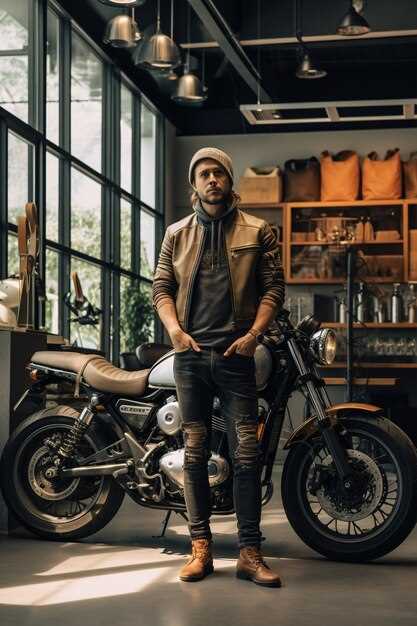
The motorcycle world is rich with diverse styles, each catering to different riding experiences and aesthetics. Among these, Café Racers and Cruisers stand out as two prominent categories, attracting enthusiasts with their unique designs and philosophies. Understanding the key differences between these two styles is essential for anyone considering which bike best suits their personality and riding habits.
Café Racers originated in the 1960s, embodying a culture of speed and agility. These motorcycles are characterized by their lightweight frames, dropped handlebars, and a minimalist approach that focuses on performance rather than comfort. Designed for quick rides and sharp turns, they have become a symbol of retro style and urban culture, appealing to those who appreciate the thrill of the open road.
Conversely, Cruisers emphasize a more relaxed riding posture and comfort. With a focus on long-distance rides and a laid-back experience, these motorcycles feature lower seat heights, wider handlebars, and powerful V-twin engines. Riders who choose cruisers often seek a leisurely journey and a sense of freedom on the highway, making them ideal for touring and long trips.
In this article, we will dive deeper into the defining characteristics of Café Racers and Cruisers, exploring their history, engineering, and the riding experience they offer. By doing so, we aim to equip potential riders with the knowledge to make an informed decision on which motorcycle style aligns with their desires and lifestyle.
Performance Characteristics of Café Racers Compared to Cruisers
Café racers are designed for speed and agility, embodying the essence of a classic racing motorcycle. Their lightweight frames and powerful engines allow for superior acceleration and handling. The leaned-forward riding position enhances control and responsiveness, making them ideal for short, spirited rides and urban environments. This design philosophy prioritizes performance, often at the expense of comfort, as café racers are built primarily for racing rather than long-distance travel.
In contrast, cruisers focus on comfort and style. Featuring a relaxed riding position with a low seat height, cruisers offer a laid-back experience over extended distances. While they may boast larger engines, providing ample torque for cruising at highway speeds, their overall performance in terms of agility and cornering is limited compared to café racers. The heavier build and design aimed at stability can result in slower acceleration and less responsive handling.
Ultimately, the distinction between café racers and cruisers lies in their performance characteristics: café racers excel in speed, agility, and a racing-inspired feel, whereas cruisers are built for comfort and smooth, long rides. Each type caters to different riding experiences–one epitomizes the classic racing spirit, while the other celebrates the journey.
Design Elements That Define Classic Café Racers and Cruisers

The design elements of classic café racers and cruisers reflect distinct styles that cater to different riding experiences and aesthetic preferences. Understanding these variations is essential for enthusiasts and potential buyers alike.
Classic café racers are defined by their minimalist approach. They often feature a slim profile, highlighting their lightweight construction aimed at speed and agility. Key design elements include a low-slung seat and clip-on handlebars that position riders in a forward-leaning posture, enhancing aerodynamics. The emphasis on performance is also evident in the use of smaller fenders and sporty tires, which contribute to a more agile ride. Retro aesthetics, such as vintage-style paint jobs and classic round headlights, showcase the rich history of racing.
In contrast, cruisers embody a more relaxed riding style, characterized by a larger and more comfortable frame. These motorcycles typically showcase a laid-back seat and wide handlebars that allow for an upright position, perfect for long rides. The design elements of cruisers often feature larger fairings and more prominent bodywork, which not only add to the visual appeal but also improve wind protection. A common choice among cruisers are chrome accents and custom paint designs that emphasize personal style and individuality, making each bike unique.
The wheels also differ significantly; classic café racers often employ spoked wheels for a vintage look, while cruisers may opt for solid wheels that enhance stability and comfort. Engine design plays a vital role too, as café racers tend to have higher-performance engines aimed at speed, whereas cruisers prioritize torque and smoothness for relaxed cruising.
In summary, the design elements of classic café racers and cruisers distinctly reflect their respective styles and intended riding experiences. Café racers focus on speed and agility with minimalist aesthetics, whereas cruisers emphasize comfort and relaxed cruising through more substantial and visually rich designs.
Rider Experience: Comfort and Handling in Cafés Racers Versus Cruisers

Café racers and cruisers represent two distinct motorcycle styles, each designed for different riding experiences. Comfort and handling are key factors that riders consider when choosing between these genres. Café racers typically feature a more aggressive riding posture, with lower handlebars and higher footpegs. This design facilitates a sporty and dynamic riding experience, allowing for quick maneuvering and sharper cornering. The lightweight frame and performance-oriented components enhance agility, making café racers ideal for urban environments and spirited rides.
In contrast, cruisers prioritize comfort and a laid-back riding position. They come equipped with wider seats, higher handlebars, and lower footpegs, supporting a relaxed posture that accommodates long-distance journeys. The heavier chassis often absorbs road imperfections, offering a smoother ride at cruising speeds. This style emphasizes a leisurely experience, making cruisers popular for riders who enjoy long rides on highways or scenic routes.
Handling varies significantly between these styles. Café racers excel in responsive handling, providing a thrilling ride through twisty roads and turning corners with ease. The emphasis on lightweight design contributes to improved handling dynamics. On the other hand, cruisers, with their larger frames, may feel less nimble but offer stability, especially at lower speeds. Riders often appreciate the predictable nature of cruiser handling while navigating through traffic or enjoying extended trips.
Ultimately, the choice between café racers and cruisers comes down to personal preference and intended use. Riders looking for an exhilarating, sporty experience will find café racers appealing, while those aiming for comfort and long-distance travel will prefer cruisers. Understanding these differences in rider experience helps enthusiasts select the motorcycle that aligns with their style and riding goals.
